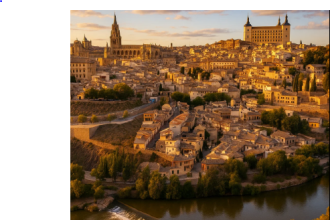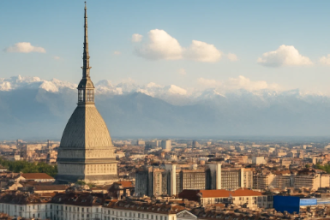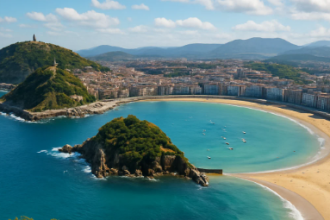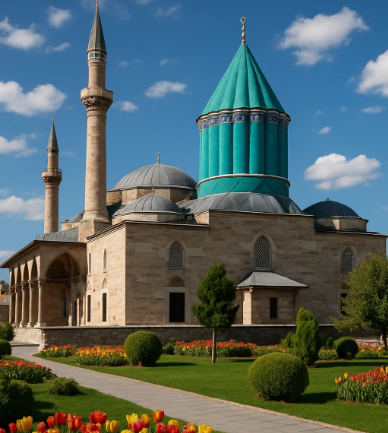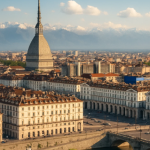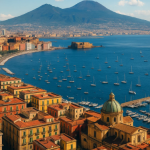Konya: My Unexpected Love for Turkey’s Soulful City
Konya hit me like a warm breeze you didn’t see coming. Tucked away in Turkey’s Anatolian heartland, this city’s a quiet stunner with its ancient mosques, whirling dervishes, and streets that hum with everyday life. My first night, sipping a tiny glass of çay in a tucked-away café as the call to prayer bounced off the rooftops, I knew I’d stumbled onto something proper special. For European travellers after a slice of history, culture, and proper Turkish heart, Konya’s a gem you’ve got to see. Here’s how it reeled me in and why you’ll want to swing by.
Why Konya Feels Like a Proper Hug
I rocked up in Konya thinking it’d be a quick stop on the way to flashier spots, but it proper won me over. It’s the kind of place where old-school mysticism—like Sufi poets and spinning dervishes—meets blokes playing backgammon in smoky tea houses. Getting here’s no hassle: cheap flights from London, Berlin, or Amsterdam land at Konya Airport, a 20-minute taxi to the centre. Or you can hop a train from Ankara—takes about two hours and the views of the plains are cracking. Buses from Istanbul or Antalya are dead comfy too. I went in spring, when the air was crisp and the tulips were popping, but autumn’s got a golden glow, and winter’s snowy streets feel like a cozy postcard. Konya’s quieter than Istanbul, so you get a real taste of Turkey without the tourist crush.
Mevlana Museum: Where the Magic Starts
The Mevlana Museum was my first stop, and it proper got me. It’s the tomb of Rumi, this famous Sufi poet, and the place feels like a deep breath of calm. I wandered past his green-tiled mausoleum, surrounded by roses, and poked around rooms full of old books, dervish robes, and bits of history that gave me chills. The museum tells you all about the whirling dervishes, and I was lucky to catch a Sema ceremony at the cultural centre nearby—those dancers spinning to eerie music was like nothing I’d ever seen. I went on a Saturday night, and it left me proper quiet for hours after. Entry’s dirt cheap, but get there early to dodge the crowds. This place isn’t just a museum; it’s Konya’s heartbeat.
Alaaddin Hill: A Bit of Old-School Konya
Alaaddin Hill is where I got a proper feel for Konya’s past. I climbed up to the Alaaddin Mosque, this old Seljuk number from way back, with tiles so intricate I couldn’t stop staring. The hill’s got a park where locals chill—families munching picnics, kids kicking balls about—and I grabbed a simit, this sesame bread ring, from a cart to nibble while soaking in the city views. Just down the way, the İnce Minare Medrese is a little museum stuffed with carved stones that look like they belong in a fantasy film. The whole area’s great for a slow wander, with tea spots hiding in the shade. It’s Konya at its most chilled, mixing history with everyday life.
Bazaars and Street Vibes
Konya’s Bedesten Bazaar was my happy place. It’s a proper warren of stalls, piled high with spices, rugs, and shiny pots that glint in the sun. I haggled—badly—for some dried figs and a bag of sugary Turkish delight, feeling like I was getting the hang of it. The Aziziye Mosque nearby, with its fancy Ottoman domes, was a proper looker, especially when it lit up at dusk. I loved just mooching around Konya’s streets, where old fellas sipped tea and argued over backgammon, and students zipped past on bikes. It’s not glitzy, but the buzz—vendors hollering, the clink of tea glasses—makes you feel like you’re in on something real.
Food That’s a Proper Treat
Konya’s grub is like your nan cooking you a massive Sunday roast—pure comfort. I went daft for etliekmek, this long, crispy flatbread topped with spicy meat, at a little joint near the bazaar. I swear I could’ve eaten three. Fırın kebab, slow-cooked lamb that falls apart, was another belter, served up at a family-run spot that felt like someone’s living room. Street carts were flogging kumpir, these loaded spuds, for a quick bite. The Mevlana Market was my morning haunt, nabbing fresh olives, slabs of creamy cheese, and pastries dripping with honey. For afters, künefe, this gooey, syrupy cheese pastry, had me weak at the knees. Pair it with a Turkish coffee that could wake the dead or a frosty ayran, and you’re sorted.
Culture and Sufi Soul
Konya’s got this spiritual vibe that’s hard to miss. The Mevlana Cultural Centre puts on those whirling dervish shows, and watching them spin to that haunting music proper gave me goosebumps. The Konya Ethnography Museum was a cracking little spot, with old rugs and tools that showed how folk lived round here ages ago. If you’re in town in December, the Mevlana Festival is a big deal—music, dance, and people coming from all over to honor Rumi. Even on a normal night, Konya’s tea houses are where it’s at—locals swapping stories over steaming glasses, and you’re bound to get pulled into a chat.
Practical Tips for Your Konya Jaunt
- When to Go: April–May or September–October for cracking weather and fewer people. Summer’s warm but fine; winter’s cold but cozy.
- Getting There: Fly to Konya Airport (20 minutes from town) from major European cities. Trains from Ankara or buses from Istanbul/Antalya are scenic.
- Getting Around: Walk the centre—it’s dead easy. Buses or taxis for farther bits; bikes are fun for zipping about.
- Where to Stay: Near Mevlana Museum for the spiritual buzz, Alaaddin Hill for history, or modern Konya for comfier digs.
- My Tip: Pack decent shoes for market mooching and a scarf for mosques. Say “merhaba” (hello) with a grin—it’s a quick way to make pals.
Why Konya Sticks With You
Konya’s not just a city—it’s a proper feeling. It’s the hum of dervishes spinning, the crunch of etliekmek in a smoky café, the glow of a minaret at sunset. It’s where old Sufi stories meet blokes arguing over tea, where every street’s got a tale, and every moment’s a little present. For European travellers after a spot that’s off the usual track but easy to hit, Konya’s your place. Pack light, ramble its soulful streets, and let this Turkish gem nick a bit of your heart.

